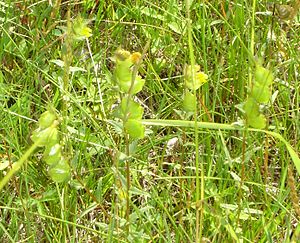[amazon_link asins=’B01JYNLHW8,B01JYG9HX6,B073C56MCF,B01JYE9I5A,B01JYMK6RQ,B01JYB28UU,B00HMMO8VQ,B00YP7QY54′ template=’ProductCarousel’ store=’finmeacur-20′ marketplace=’US’ link_id=’b55f7a32-5af5-11e7-91cb-f7663e5d9b5e’]
Botanical Name : Xanthorhiza simplicissima
Family: Ranunculaceae
Genus: Xanthorhiza
Species: X. simplicissima
Kingdom: Plantae
Division: Magnoliophyta
Class: Magnoliopsida
Order: Ranunculales
Synonyms: Xanthorhiza apiifolia, Zanthorrhiza apifolia
Common Names :Yellowroot
Habitat : Xanthorhiza simplicissima occurs in Eastern N. America – New York to West Virginia and south to Florida and Alabama.Shaded stream banks, moist woods, thickets, and rocky ledges from sea level to 1200 metres
Description:
Xanthorhiza simplicissima is a deciduous Shrub growing to 1 m (3ft 3in) by 3 m (9ft) at a fast rate. The leaves are spirally arranged, 10-18 cm long, each divided into 5 toothed leaflets, and flowers emerge only from the upper portion of the unbranched stem. The flowers are produced in broad panicles 6-20 cm long, each flower small, star-shaped, reddish brown to purple brown, with five petals.
Yellowroot propagates asexually by sending out many underground runners, and it reproduces sexually with seeds.

It is hardy to zone 6. It is in flower from Mar to April. The flowers are hermaphrodite (have both male and female organs)
The plant prefers light (sandy), medium (loamy) and heavy (clay) soils.The plant prefers acid soils..It can grow in full shade (deep woodland) semi-shade (light woodland) or no shade.It requires moist or wet soil.
Cultivation:
Requires a moist acid soil in sun or part shade. Prefers shade or semi-shade. Succeeds in any moist fertile soil according to other reports. Hardy to about -20°c[184]. Plants can spread considerably by means of suckers, especially when they are growing in a light soil. A greedy plant, inhibiting the growth of nearby plants, especially legumes.
Propagation :
Seed – best sown in a cold frame as soon as it is ripe in the autumn . Sow stored seed in a cold frame in late winter. When they are large enough to handle, prick the seedlings out into individual pots and grow them on in the greenhouse for at least their first winter. Plant them out into their permanent positions in late spring or early summer, after the last expected frosts. Division in the autumn or late winter
Medicinal Uses:
Antihaemorrhoidal; Astringent; Stomachic; Tonic.
The root is astringent and a blood tonic. A tea made from the roots is used to treat mouth ulcers, stomach ulcers, colds, jaundice etc. An infusion of the roots has also been used to treat piles, though the report does not specify if it is used internally or externally. Some caution is advised in the use of this plant, see the notes above on toxicity. The root contains the alkaloid ‘berberine’ which is used for its tonic properties and for digestive disorders. Berberine is anti-inflammatory, astringent, haemostatic, antispasmodic, immuno-stimulant, uterine tonic and antimicrobial. It stimulates the secretion of bile and bilirubin and may be helpful in correcting high tyramine levels in people with liver cirrhosis
Other Uses
Dye; Ground cover.
A yellow dye is obtained from the root. The entire plant can be crushed to yield a yellow dye. A good ground cover for damp semi-shaded positions. Plants should be spaced about 1.2 metres apart each way .
Known Hazards : The root, when taken in high doses, is potentially toxic
Disclaimer:The information presented herein is intended for educational purposes only. Individual results may vary, and before using any supplements, it is always advisable to consult with your own health care provider
Resources:
http://www.pfaf.org/user/Plant.aspx?LatinName=Xanthorhiza+simplicissima
http://en.wikipedia.org/wiki/Yellowroot
Related articles
- Dioscorea japonica (findmeacure.com)
- Clintonia borealis (findmeacure.com)
- Achillea ageratum (findmeacure.com)
- Oxalis violacea (findmeacure.com)
- Imperata cylindrical (findmeacure.com)
- Rubus coreanus (findmeacure.com)
- Artemisia tilesii (findmeacure.com)
- Asparagus adscendens(Sufed musli) (findmeacure.com)
- Asarum sieboldii (findmeacure.com)


